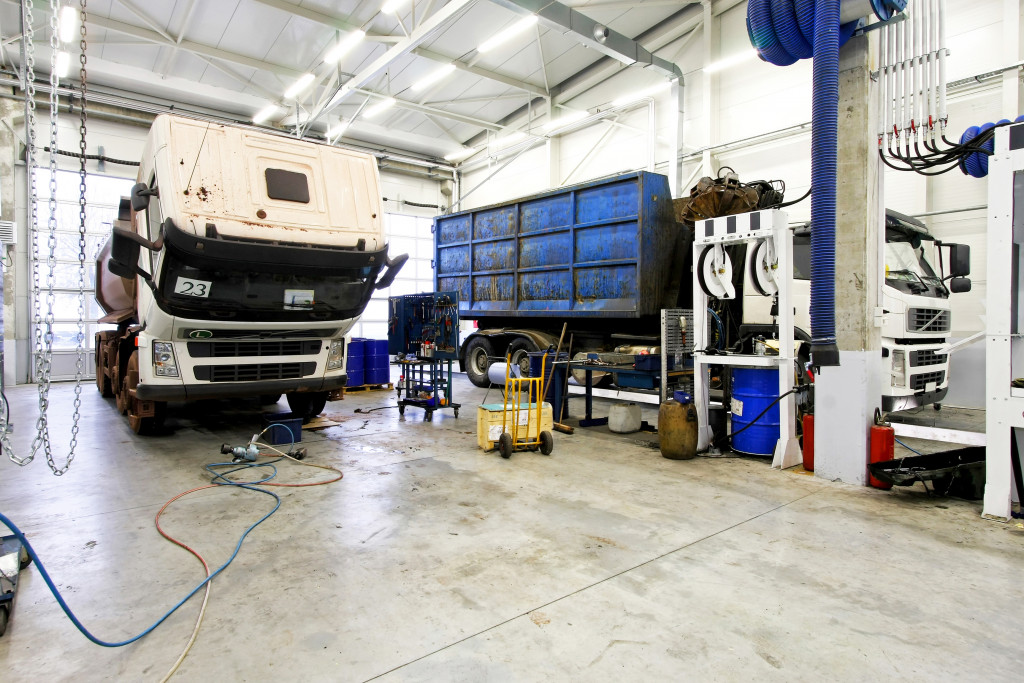Whether you’re a warehouse manager, a driver, or an employee responsible for transporting tools and equipment from one location to another, safety should always be your top priority. Warehouse equipment are especially vulnerable to damage during transport, so you’ll need to take extra care to ensure that the items arrive safely. These may include batteries, pallets of stock, or even large machinery. Here are some tips for safely transporting warehouse tools and equipment:
Secure Your Load
One of the most important steps when it comes to safely transporting items is to make sure that your load is properly secured. Whether using ropes, straps, or cargo nets, ensure that everything is securely fastened before starting your journey. If you’re carrying hazardous materials, like flammable liquids or combustible gases, make sure to properly secure the load following the relevant regulations. For instance, these items must be secured, so they don’t spill or leak during transport.
If you’re transporting lithium-ion batteries, you should use a fireproof battery box to prevent fire hazards. These batteries contain multiple layers of metal foils that can release energy when damaged, causing a fire. Therefore, fireproof boxes are essential for keeping the batteries secure and your load safe during transit.
Be Aware of Your Vehicle
You must also be aware of your vehicle’s size and weight restrictions when transporting items. Ensure that the cargo you’re carrying does not exceed the load capacity of your vehicle, as this could result in an accident. Similarly, ensure that the size of your load does not exceed the overall dimensions of your vehicle. For example, if you need to transport a forklift, make sure that the forklift fits within the length, width, and height restrictions of your vehicle. For this, you may need a flatbed truck or a trailer.
Also, remember that the weight of your load can affect your vehicle’s performance, especially when traveling up hills. So if you’re transporting a large and heavy item, adjust your speed accordingly. Otherwise, the extra strain on the engine could cause it to overheat or stall. Additionally, too much weight can affect the braking and handling of your vehicle, so it’s important to only load what your vehicle can safely handle.
Check for Damage
Prior to loading any warehouse tools or equipment, be sure to look them over for any signs of damage like dents, scratches, and deformations. If you notice any damage before loading, ensure that it is documented and reported to the proper authorities. Similarly, when transporting fragile items like computers or batteries, ensure enough padding is added to prevent them from getting damaged due to rough handling. When unloading your cargo, inspect it again to ensure that everything arrives safely. If you notice any discrepancies, document them and report them immediately.

Check Your Vehicle
Before loading your truck with tools and equipment, checking your vehicle and ensuring all systems are working properly is important. Ensure that the brakes are functioning correctly and that all the lights are working as they should be. It’s also important to check the tires for any signs of wear and tear before taking off on your trip. Tire socks can help provide extra traction on icy surfaces if you’re transporting during the winter. During hot or humid weather, ensure that the air conditioning system works correctly, as this can help your vehicle run more efficiently.
It’s also important to check your vehicle’s fluid levels and ensure they are filled up before you leave. This includes checking the oil, windshield washer fluid, brake fluid, and power steering fluid. Finally, check all the mirrors and adjust them if necessary for an optimal road view. Remember that bigger vehicles like flatbed trucks require a larger blind spot, so adjust your mirrors accordingly.
Follow Safety Protocols
Finally, you must always follow safety protocols when transporting warehouse tools or equipment from one location to another. Ensure that all relevant safety signs are in place and visible to other drivers on the road. Likewise, remember to wear a seatbelt at all times and avoid any distractions while driving, such as talking on your phone or eating snacks. Another important safety protocol is to never overload your vehicle with more cargo than it can handle. This could lead to an accident, so make sure you always follow the load capacity of your truck or trailer.
When transported from one place to another, warehouse tools and equipment need special care. These are not just items. They are investments and can be very expensive to replace. Therefore, it’s important to follow the tips mentioned above to ensure that your load arrives safely at its destination. Doing so will help prevent any damages and keep your warehouse running smoothly.











